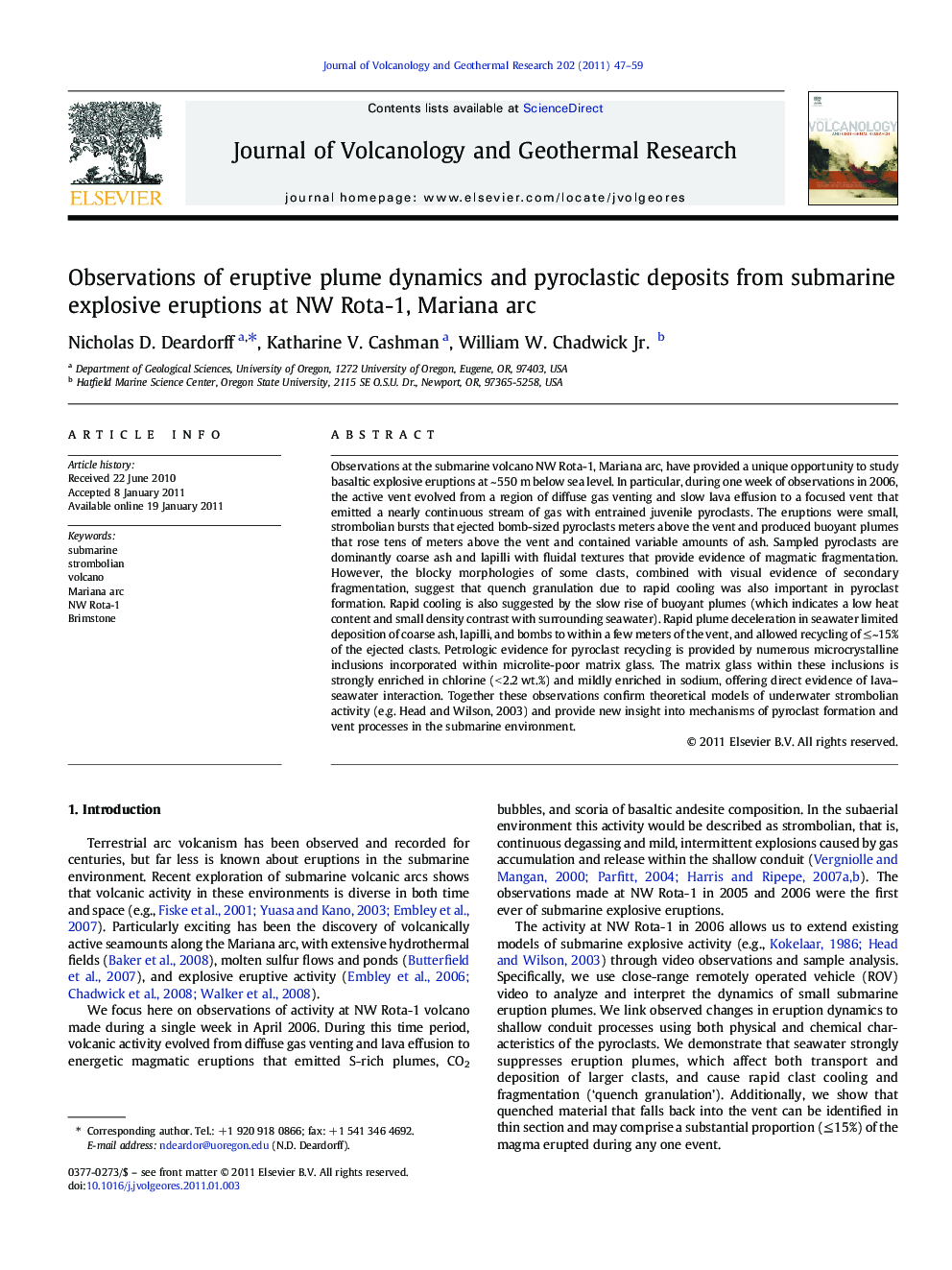| Article ID | Journal | Published Year | Pages | File Type |
|---|---|---|---|---|
| 4712846 | Journal of Volcanology and Geothermal Research | 2011 | 13 Pages |
Observations at the submarine volcano NW Rota-1, Mariana arc, have provided a unique opportunity to study basaltic explosive eruptions at ~ 550 m below sea level. In particular, during one week of observations in 2006, the active vent evolved from a region of diffuse gas venting and slow lava effusion to a focused vent that emitted a nearly continuous stream of gas with entrained juvenile pyroclasts. The eruptions were small, strombolian bursts that ejected bomb-sized pyroclasts meters above the vent and produced buoyant plumes that rose tens of meters above the vent and contained variable amounts of ash. Sampled pyroclasts are dominantly coarse ash and lapilli with fluidal textures that provide evidence of magmatic fragmentation. However, the blocky morphologies of some clasts, combined with visual evidence of secondary fragmentation, suggest that quench granulation due to rapid cooling was also important in pyroclast formation. Rapid cooling is also suggested by the slow rise of buoyant plumes (which indicates a low heat content and small density contrast with surrounding seawater). Rapid plume deceleration in seawater limited deposition of coarse ash, lapilli, and bombs to within a few meters of the vent, and allowed recycling of ≤~15% of the ejected clasts. Petrologic evidence for pyroclast recycling is provided by numerous microcrystalline inclusions incorporated within microlite-poor matrix glass. The matrix glass within these inclusions is strongly enriched in chlorine (< 2.2 wt.%) and mildly enriched in sodium, offering direct evidence of lava–seawater interaction. Together these observations confirm theoretical models of underwater strombolian activity (e.g. Head and Wilson, 2003) and provide new insight into mechanisms of pyroclast formation and vent processes in the submarine environment.
Research highlights► Observations of a range of low mass eruption rate submarine explosive eruptions. ► Plume rise is limited due to suppression and cooling by seawater. ► Clasts form by magmatic fragmentation with seawater induced quench granulation. ► Pyroclast recycling is evidenced by microcrystalline inclusions in matrix glass. ► Microcrystalline inclusions are strongly enriched in Cl (< 2.2 wt%).
